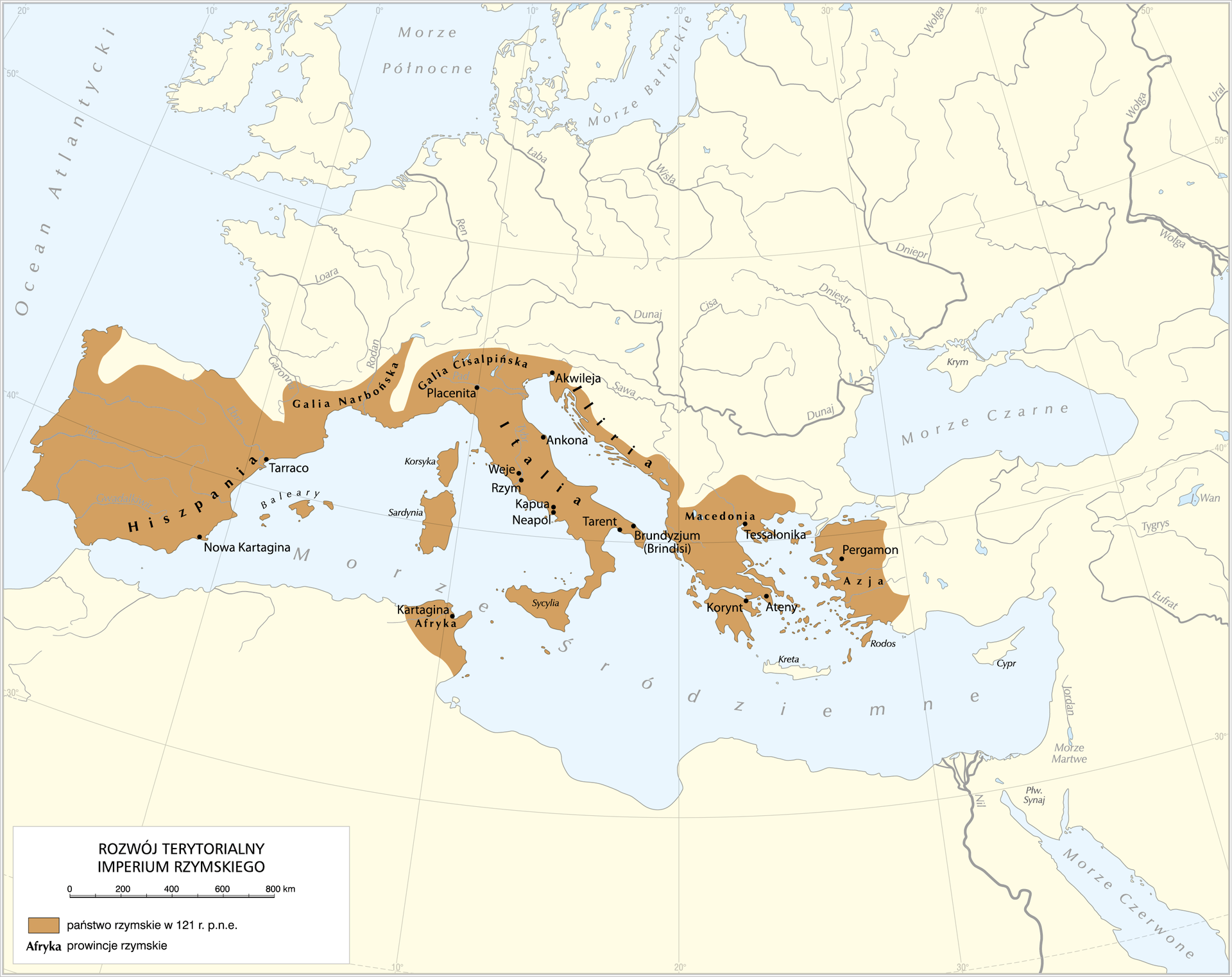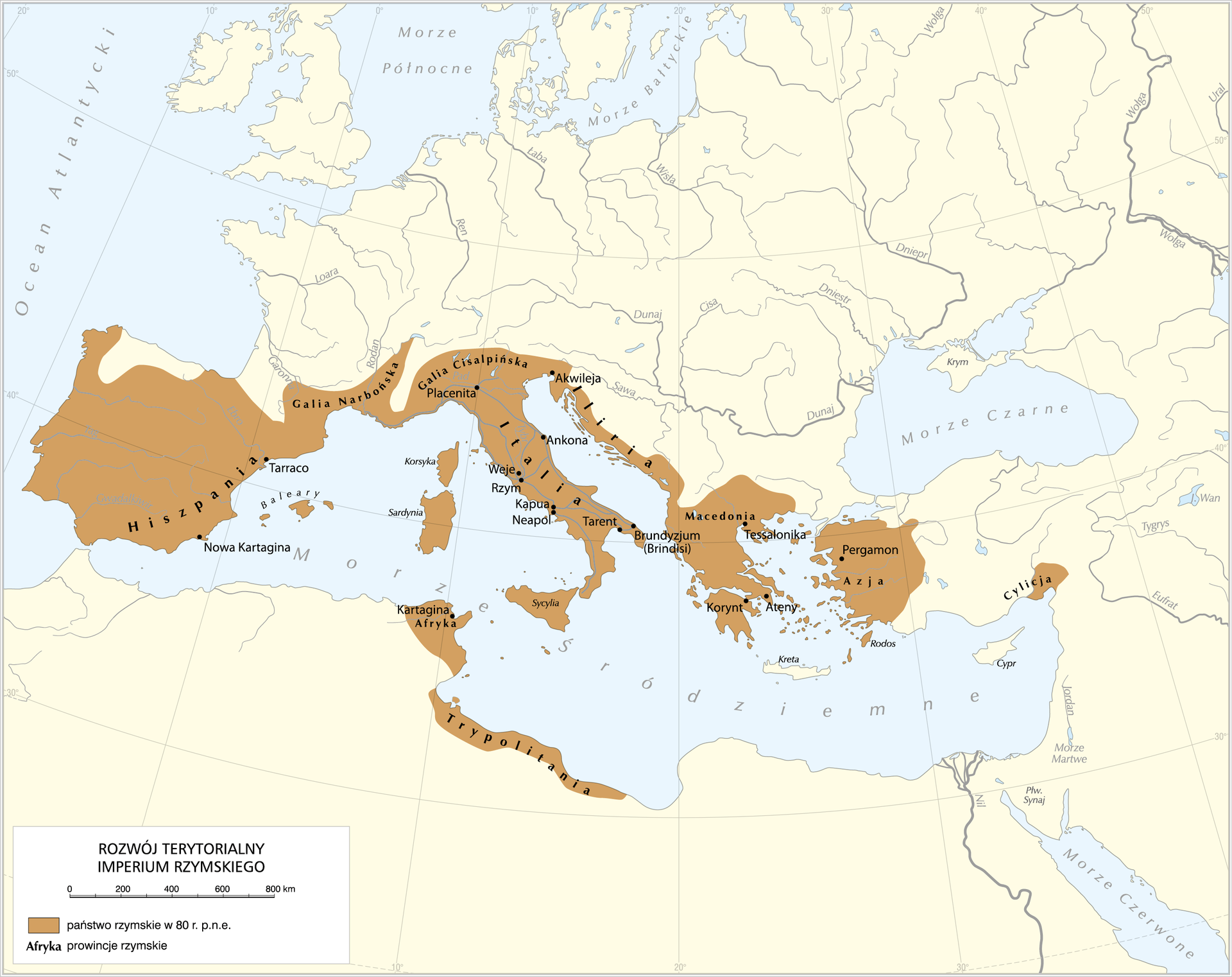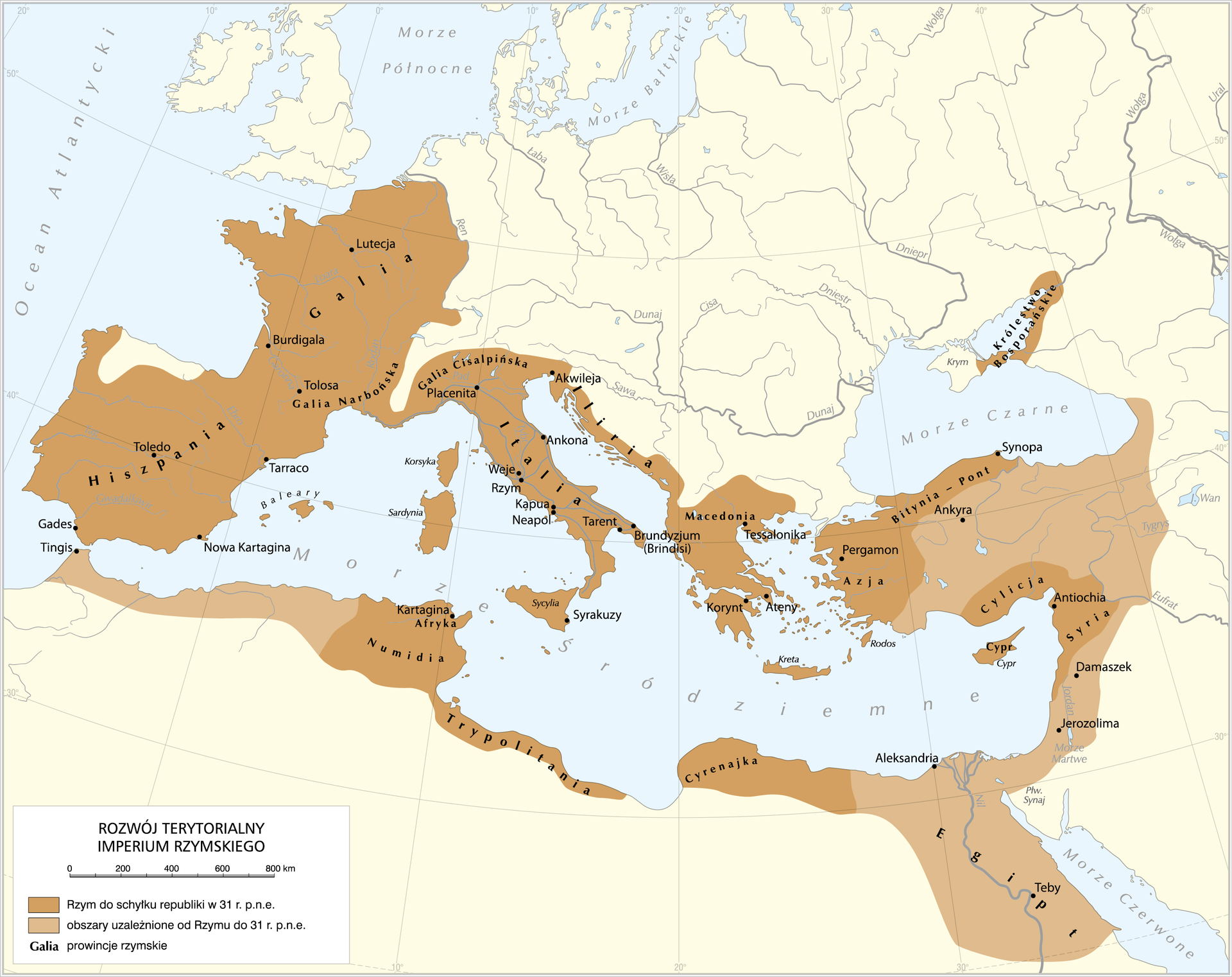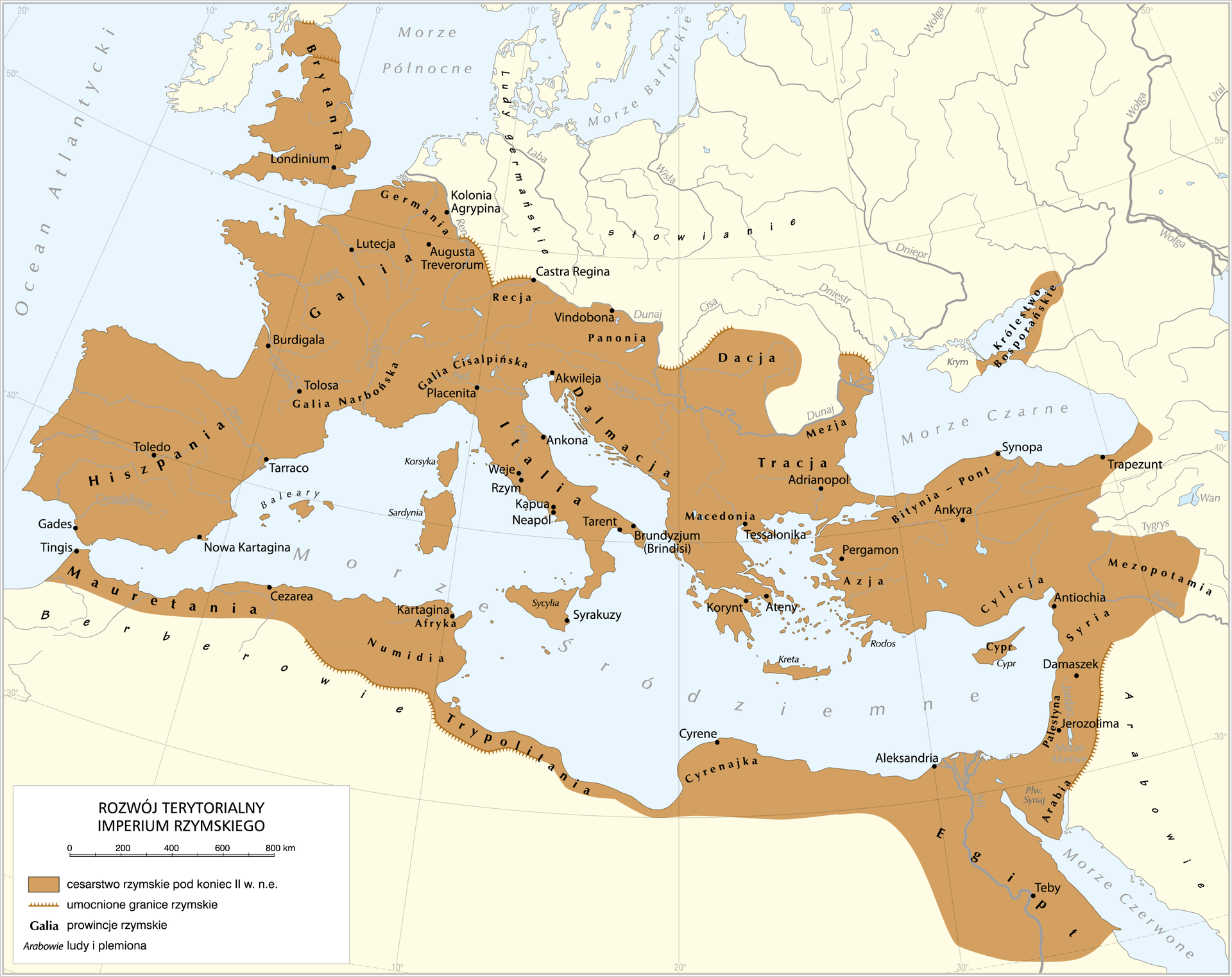Rome – the time of conquest
to characterize what the Roman army looked like and what triumphtriumph was;
to describe whom the Romans fought and conquered and what were the consequences of these conquests;
to explain who were the eminent leaders, what were the most important battles and achievements of the period of ancient Rome.
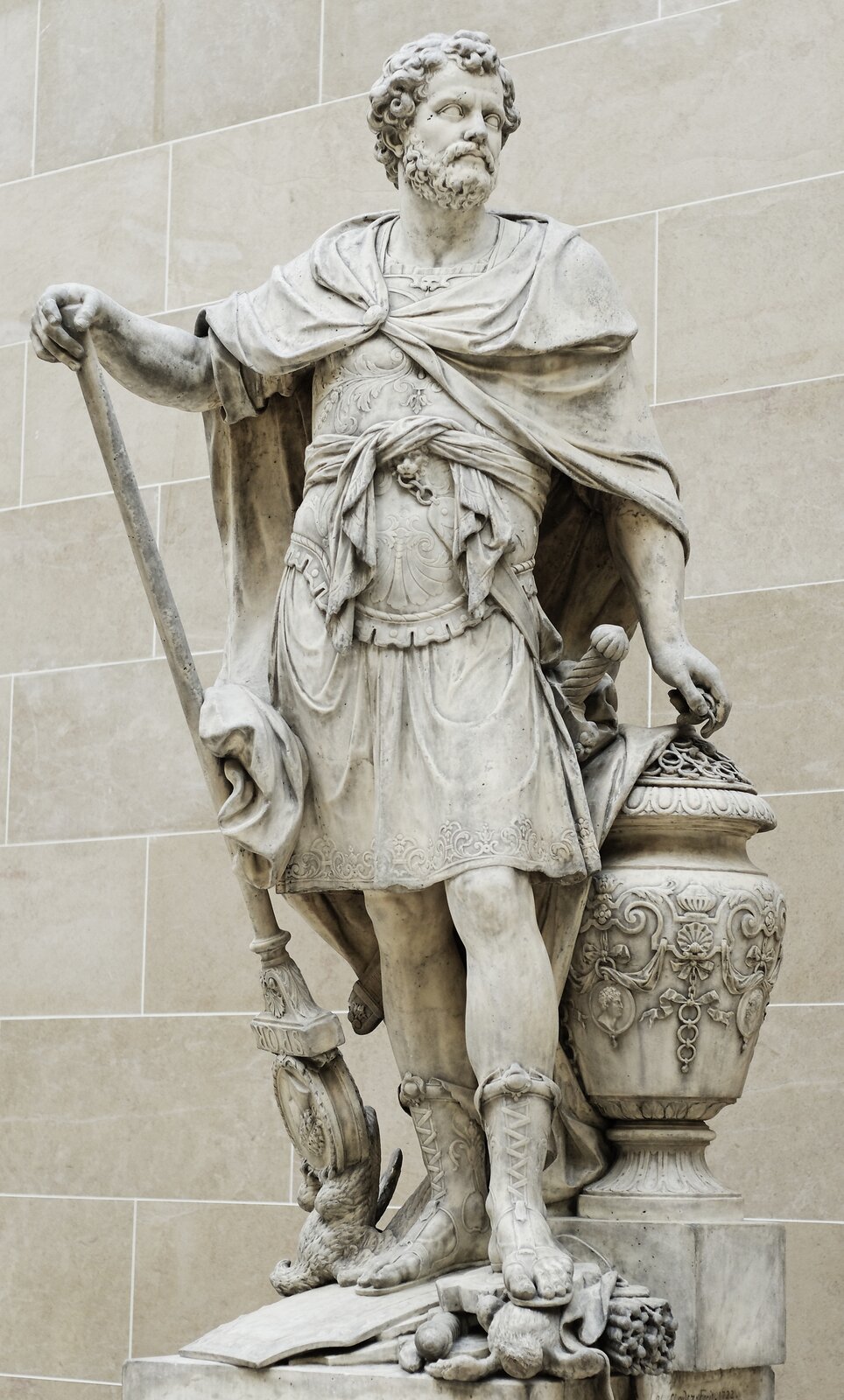
Rome as a republicrepublic was initially a small city‑state and nothing foreshadowed its great triumphs in the future. Gradually, by conquering other tribes, it managed to take control over the entire Apennine Peninsula. The expansion was stopped for several decades after the invasion of the Gauls, who, at the end of the fourth century BC, defeated the Romans and plundered the city. However, it did not stop its further development. The key role in the implementation of the policy of conquests was played by the army, organized in legionslegions. After the conquest of Italy, the Romans turned their attention to Sicily, where the Carthaginian Empire had its colonies. The Roman elites agreed that only territorial expansion will allow keeping the current strong position of Rome. After three wars in the third and second century BC called the Punic Wars, the Romans achieved a complete victory and the Carthaginian Empire crushed. The Second Punic War of 218‑201 BC was a particularly fierce conflict. The command of the Carthaginian army was taken over by Hannibal whose bold plan to pass through Spain, Gaul and the Alps to attack the Romans from the north was fully realized. In the great battle of Cannae in 216 BC, he defeated the Roman army. However, he did not manage to take advantage of this victory and the Romanian tactics of avoiding clashes with enemy troops and attacking Hannibal's allies proved to be extremely effective. They finally defeated the army of Carthage at the Battle of Zama in 202 BC and imposed a hard condition on it.
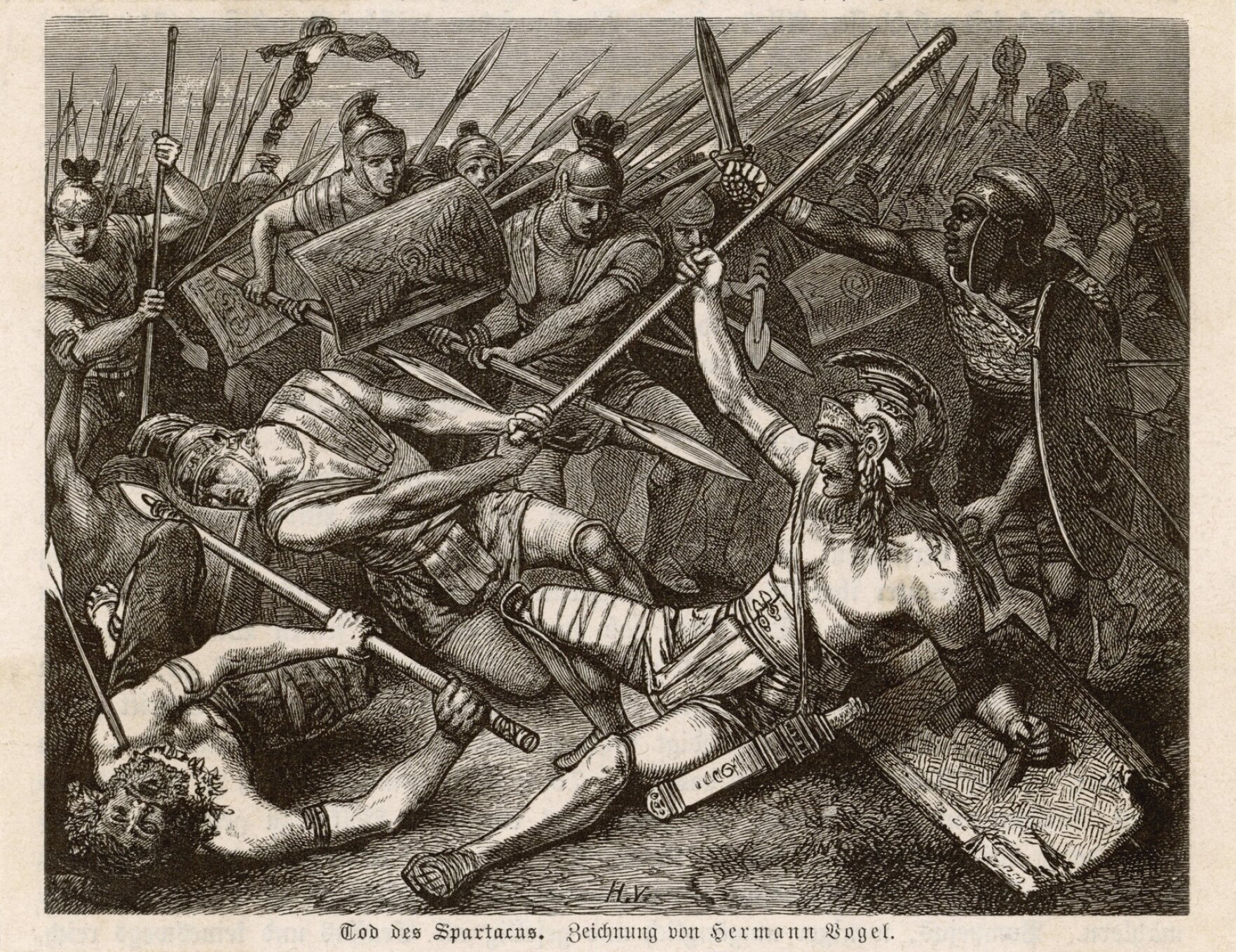
After the victory over Carthage, Rome directed its expansion toward the eastern part of the Mediterranean. In subsequent years, successive areas were conquered and incorporated into the Roman Empire, turning them into provinceprovinces administered by governors. Macedonia, Greece (146 BC) and Egypt (30 BC) became the parts of Rome. The conquest of the Greek world ended, making the Mediterranean sea the internal sea of the Roman Empire, called by its inhabitants the Mare Nostrum – our sea. The effects of the conquests, even despite the victories of the Roman legions, did not always bring the same profits. The long Punic Wars caused huge losses in the economy, destruction and long‑term absence of peasant‑soldiers from the country. It contributed to the increase in the number of slaves, who repeatedly rebelled against their masters. The largest uprising, led by Spartacus, broke out at the beginning of the first century BC. In spite of many defeats, thanks to entrusting the command to the eminent commander Crassus and gathering a huge number of troops, the army of Spartacus was defeated. As a result, thousands of his soldiers, former slaves, were crucified on the way from Kapua to Rome.
A centuries‑old order based on the relationship of a rich patronpatron taking care of a poor clientclient has been shaken. As a result of the deepening differences between a small group of rich people profiting from conquests and the masses of the poor, there were many conflicts and outbursts of dissatisfaction.
Match the names of the Roman Army units to their descriptions.
The most experienced soldiers, fighting in the last lines. They fought as a last resort, hence the Roman saying “It comes down to the triarii”. Their weapons were a hasta and a sword. Protection was provided by a helmet, a mail and a large oval shield., They stood in the second line of formation. They were experienced soldiers who supported the first line of fighting hastati. They had standard weapons – a sword and two pilums, but their body was protected by heavy mail., A light-armed infantry which started the battle. They had no armor or helmets, only a round shield to protect themselves. Their task was to injure the enemy with pilums, arrows and stones, and then retreat to the rear., This squad was placed on the wings and was supposed to protect the main forces from envelopment. During the march, it performed reconnaissance tasks. In each of the legions, there were 10 units of this formation consisting of 30 soldiers., The least experienced legionnaires. They fought in the first ranks. Their weapons included a short gladius sword and two pilums. As protection, they used a helmet, a breastplate and an oval shield - scutum.
| Velites | |
| Hastati | |
| Principes | |
| Triarii | |
| Equites |

Look closely at the map and then complete the following sentence: "Before the First Punic War, Rome reigned over..."
- Italia.
- Spain.
- Sicily.
Analyze the illustration and find out what the triumph in ancient Rome was.
Indicate the sentences that describe the effects of Roman conquests.
- The social patron-client relationship has been created.
- Social contrasts have begun to intensify.
- Most of Roman society became richer.
- The number of slaves staying in Italy increased.
- There was no one to work on the farm because farmers served in the Roman army.
Keywords
triumph, Rome, province, republic
Glossary
Republika – dosłownie rzecz publiczna, ustrój polityczny, w którym władza sprawowana jest przez obywateli poprzez wybory. W starożytnym Rzymie była to niemonarchiczne sprawowanie władzy przez posiadających prawa polityczne obywateli.
Legion – podstawowa jednostka taktyczna rzymskiej armii złożona przede wszystkim z ciężkozbrojnej piechoty (legionistów).
Kontrybucja – danina nałożona na przegraną w wojnie stronę, np. państwo.
Prowincja – jednostka administracyjna w starożytnym Rzymie utworzona na podbitym terenie, poza Italią. Zarządzana byłą przez namiestników.
Limes – umocnienia i fortyfikacje na granicach cesarstwa rzymskiego.
Triumf – uroczysty wjazd do Rzymu. W starożytnym Rzymie było to najwyższe wyróżnienie jakie mógł otrzymać wódź za zwycięstwa w bitwach. Jego celem było uczczenie wodza i jego żołnierzy.
Patron – używane w starożytnym Rzymie określenie na bogatego obywatela (patrycjusza), który sprawował opiekę nad ubogimi obywatelami (klientami) lub niewolnikami. Patron był zobowiązany do opieki nad klientem.
Klient – ubogi, wolny obywatel w starożytnym Rzymie pozostający pod opieką patrona. Klient musiał być posłuszny patronowi, w zamian on zobowiązywał się do pomocy materialnej, finansowej oraz opieki nad nim.
